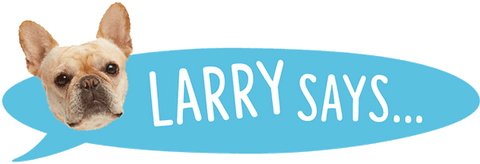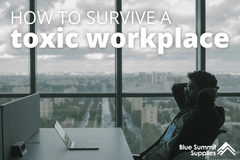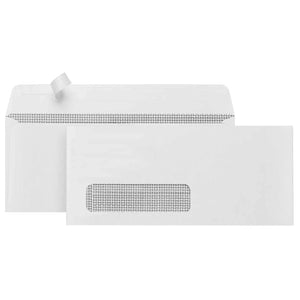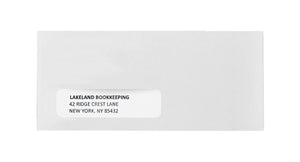Employees are a business's most valuable asset. A team’s cohesion can make or break office dynamics, team happiness, and overall productivity. Hiring based on organizational fit ensures you find someone who shares the same values as your brand, meets the requirements of the job, and meshes with your team.
Making poor hiring choices is costly, and it takes a toll on productivity and your team’s wellbeing. Gallup says, “The cost of replacing an employee can range from one-half to two times the employee's annual salary.” That means a single bad hire with a $60,000 a year salary would cost a business anywhere from $30,000-$120,000 to replace. That’s certainly not an expense to take lightly.
Don’t skimp on hiring procedures, and never rush to make a hasty hire. This person will become part of your business family, so it’s critical that you take the time to figure out how they will fit within your company culture and current team dynamics.
Continue reading to learn more about the importance of organizational fit, how to establish your company culture, and how to hire the right candidates for your business.
What Is Organizational Fit?
Organizational fit is a hiring method that prioritizes a prospective employee’s values and personality ahead of their qualifications. Rather than solely relying on a candidate’s qualifications, hiring for organizational fit takes a closer look at the individual and how that individual will contribute to and fit within your established company culture.
Job Fit vs. Organizational Fit
Job fit matters more for businesses and hiring managers who value a candidate’s already established skill for the job itself. Can the candidate hit the ground running as soon as they begin? Do they match the specific requirements expressed in the job description? Hiring for job fit means hiring a skilled worker whom you barely need to train without considering how well they’ll get along with the people they’ll be working with. If you’re just glancing at a few different resumes, looking for job fit is the simplest way to weed out anyone who doesn’t have the required skills you listed in the application.

Organizational fit is important to businesses that prioritize their company culture over the skills of a worker. Knowing the candidate is going to get along with the team is more important than their innate skills for the job—you place more value on their personality than whether or not you’ll need to spend time training them. You believe skills can be taught. What really matters is who the candidate is. If a candidate is superbly qualified but doesn’t stand for the kinds of things your brand does or is likely to clash with several members of your organization, that candidate would not be awarded the job.
You may use both strategies to different degrees in your hiring process, but you should have a clear understanding of what your priorities are before you begin.
How to Describe Your Company Culture

Get It In Writing
Don’t let your company culture become a guessing game. You need to make decisions about your culture so that it always aligns with your core beliefs and values. Each company is different, which means priorities, values, beliefs, and culture will vary from one to another.
Making concrete decisions will get everyone on the same page, and it will help you craft a team that aligns with your brand.
To identify your business’s unique company culture, consult your brand guide. What matters most to your business? What are your company’s mission and vision statements? Consider what you value most. What beliefs do you hold? Use all of this information to align your company culture to the rest of your brand.
You might describe company culture as:
- Innovative
- Honest (integrity)
- Fun
- Playful
- Curious
- Agile
- Flexible
- Adaptable
- Accountable
- Reliable
- Respectful
- Driven
- Goal-oriented
- Kind
- Open-minded
- Resilient

Make It Available to Everyone
Set your company culture in stone by storing it within a brand or style guide that you keep in an online location that everyone has access to. When new hires are added to your team, ensure they know where to find your brand guide and the details about your company culture (and ensure they read it carefully!)

Put It Front and Center
Don’t be afraid to be loud and proud about your company culture. As long as you are prioritizing your culture in a positive way, let the world know. You’ll be able to attract business partners, clients, and talent that are already aligned with your brand.
Ways to share your company culture:
- Create a website page dedicated to describing your company culture
- Write about your workplace culture on your blog
- Display your company values or culture statement on your office walls
Examples of Company Culture Statements
A company culture statement defines your values, goals, and how you treat your employees and customers. The statement should be concise but paint a clear picture of what it’s like to work at your company.
Consider the kinds of candidates you want to attract and the work environment you’re trying to build. What do these people value most? Why would they want to work for you? Are you a playful company that doesn’t take itself too seriously? Are you building an inclusive workforce designed to attract people from all walks of life? Are you a fast-paced company that expects employees to always go the extra mile? Take the time to really consider who you are, who you want to be, and who you want to bring with you.
Here are a couple of examples of other company’s culture statements:

Etsy:
Life and Culture at Etsy: As an Etsy employee, you can do the work you love, be yourself, and make an impact in the lives of millions. Our commitments to diversity and inclusion, team culture and the spaces where we work all reflect our mission to keep commerce human.

Ticketmaster:
All work and no play? No way! We come together at more than just meetings. In fact, there's a fun get-together on the calendar every month, including our annual Halloween bash and costume contest, and take your children to work day. Sometimes you can even catch a live band on the roof at our Hollywood headquarters.
How to Hire Based on Organizational Fit

Ask the Right Interview Questions
Design your interview process to assess how well someone will fit within your company culture. Pick questions that dig into how they would work with the rest of your team.
Team player interview questions to ask:
- What was your best experience working on a team?
- What was your worst experience working on a team?
- What are the pros and cons of working with a team?
- What traits do you value most in a teammate?
- What traits would your teammates say they value in you?
- What do you look for in a company culture?
- Have you ever worked for a company that didn’t align with your own values?
- Which of our brand values do you connect with most?
- What do you like to do when you’re not working?
- In what type of work environment are you the most productive?
- What does work-life balance mean to you?
- What type of team building activity would you recommend we try?
- Why do you want to be a part of our team?
In the end, you want to find someone who fits two criteria. First, you need to know how the person aligns with your company values. If your company values innovation above everything else, so should the candidate—the people you hire should hold the same values as your brand.
Secondly, make sure the potential hire will complement your existing team. Consider all aspects of how your team likes to work, communicate, problem solve, etc. What traits are missing from your team? Hiring for organizational fit doesn’t mean hiring carbon copies of the same person. You’re looking for balance. If you know you have mostly introverts on your team, you may want to hire an extrovert to add balance and to ensure a full range of skills are covered across the company.

Culture Fit Assessment
A culture fit assessment, or an organizational fit assessment, is designed to give you a clearer picture of a candidate’s inner life. What are their values? How do they behave as a member of a team? What do they seek from their employment? Do their values and goals align with your company’s values and goals? This alignment is key for selecting the candidate that best fits your company culture.
More from Blue Summit Supplies
💡 Why Team Building is Important and How We Do It
💡 How to Make Office Friends and Get Along with Coworkers
Do you love office talk as much as we do? Follow our office supplies blog for the latest office trends, team building strategies, product comparisons, and more.
If you have any questions or want to talk to someone about office supplies, send us an email or connect with us on Twitter, Facebook, or Instagram.
 For more informative articles about office supplies, subscribe to our email newsletter!
For more informative articles about office supplies, subscribe to our email newsletter!
Never fear, you won't begin receiving daily sales emails that belong in a spam folder. Instead, we promise a fun weekly roundup of our latest blog posts and great finds from across the web. And if you lose interest, it's always easy to unsubscribe with a single click.









